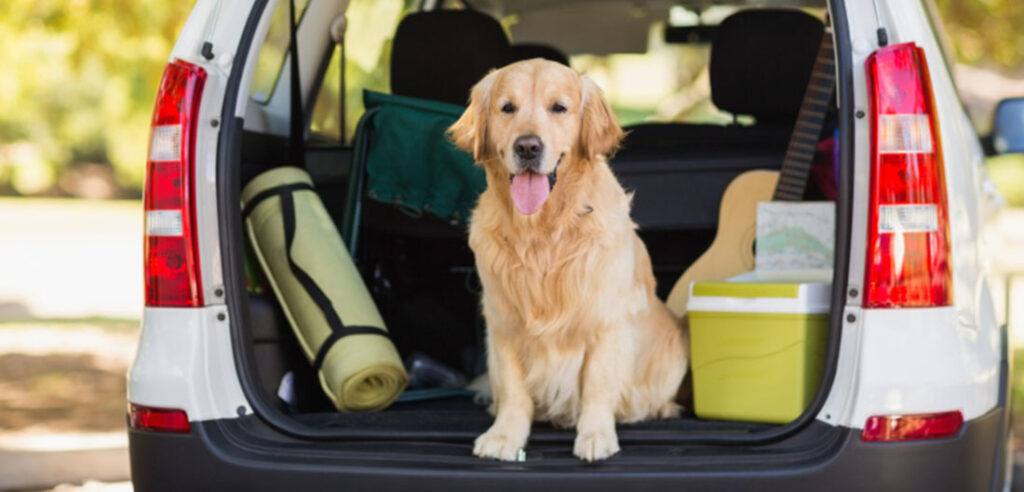Like many of us, you may consider traveling with your pet as a comforting way to get around. So, while you’re on the road with your furry friend, always remember: your pet’s safety is in your hands.
In the irregular geometry of your car’s interior, pets can find it difficult to perform their customary acrobatics when responding to sudden g-forces, potentially suffering harm to bones and soft tissue even in non-emergency acceleration and deceleration scenarios. So, let’s look at how we can keep our four-legged crew members safe while we’re on the road.
Can Pets Wear Seat Belts?
In a word, no.
Pets cannot wear seat belts intended for humans.
The American Kennel Club recommends using crates and carriers made of a strong material, such as aluminum for safe transportation. For small pets, popular consumer models with shells made of synthetic materials and gated with metal wire can be sufficient — if properly secured — to protect against moderate banging and bumping. For larger pets that require a bit of roaming room, a barrier can be installed to separate the animal from human passengers.
When it comes to harnesses, the Center for Pet Safety®, a nonprofit and advocacy organization, conducted research that found not all of these devices worked as intended. The AKC recommends using harnesses with thick padded straps that allow pets to sit upright or lie down while restrained.
Common Sense Pet Travel
As is often the case, a little common sense can go a long way, so let’s take a look at some sensible tips for pet travel:
- Squeeze the breeze. Although we tend to smile at the sight of a happy dog with its head out the window, it’s not an ideal way to ensure pet safety. While there are obvious dangers from collisions or unexpected jolts, don’t forget that dirt, debris and even insects can strike your pet at a high speed, causing injury to the nose, mouth, eyes and ears.
- Secure your precious cargo. The safest location for a pet container is on the floor of the car behind a seat. Unless otherwise recommended and demonstrated by the manufacturer, such containers should not be seat-belted in place. Pets should never be allowed in the front compartment of the car or anywhere else where airbag deployment could cause severe injury. If using a barrier, make sure it’s firmly anchored according to the manufacturer’s instructions.
- Be prepared. Be sure to pack extra food, treats, toys, collars, leashes and water. Water content changes from city to city, so bring bottled water or bottled tap from home to prevent any digestive troubles. You should also bring medical records, medications and identification, including pictures of you with your pet.
- Keep your companion close. Never leave your pet unattended in a car. It’s a health risk (and often a crime) to leave your pet in the car, especially in warm weather. It’s also an invitation for thieves, even if the pet is alone for only a moment. The American Kennel Club® reports that dog thefts, including incidents of pets being snatched from parked cars, are on the rise.
- Verify your vets. Know how to find a qualified veterinarian near your destination. Ask your vet for a recommendation or use the ZIP code search services offered by the American Animal Hospital Association (AAHA) to find accredited clinics.
Add a Level of Confidence
Traveling with your pet should be an enjoyable experience. With a little extra planning and precautions, you and your pet can ride in style – and with ease. Add an additional level of safety to your route by protecting yourself, your property and of course, your pet, with a policy from Erie Insurance.
Give us a call today at 919-524-2149 and we can provide you with a quote today.
Original post https://www.erieinsurance.com/blog/keep-pets-safe-in-cars




